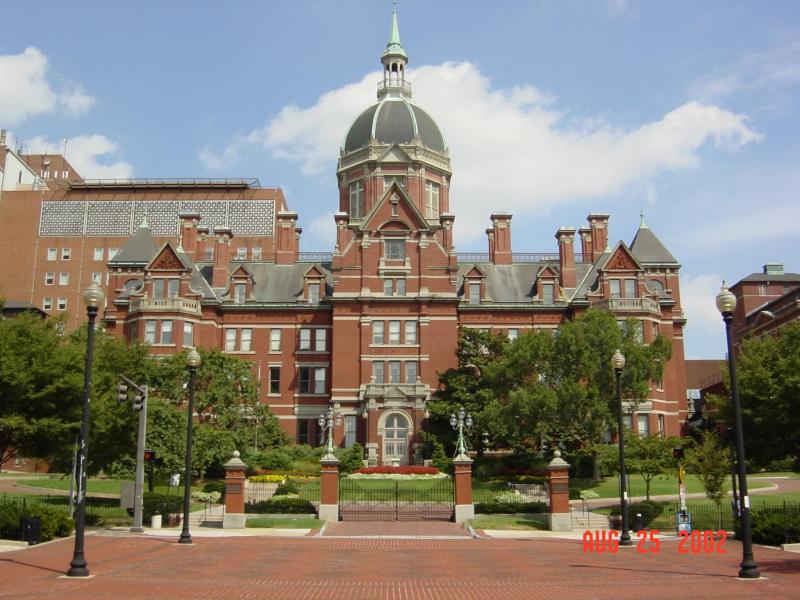Bloomberg pledges $1.8 billion for college accessibility, but there’s more to the story
BALTIMORE — College is undoubtedly one of the most expensive journeys 18-year-olds embark on in the U.S. With tuition costs on the rise, low- and middle-income students often struggle to gain access to quality higher education.
Recognizing this pervasive inequality in educational accessibility, CEO of Bloomberg L.P. and former New York City mayor, Michael Bloomberg, recently donated a historic $1.8 billion to his alma mater, Johns Hopkins University, for the purpose of increasing the financial aid available to low- and middle-income students. As a low-income student at Hopkins, the news of this generous donation seemed ample cause for celebration.
But soon I began to question, is Hopkins where this financial support is most needed? While elite universities routinely receive publicized contributions from alumni and other philanthropists, peer institutions with less access to financial support struggle to support low- and middle-income students on their campuses.
It is well known that socially and economically disadvantaged students face a myriad of academic challenges and barriers beginning early in their educational careers. From a young age, children living in impoverished neighborhoods like Baltimore City find it difficult to learn and achieve long-lasting academic goals in a struggling education system. Often described as a ‘set-up city,’ Baltimore can be a city devoid of meaningful educational, economic, and social opportunities for many of these youth (DeLuca 2018).
With a lack of safe public spaces, recreation centers, and youth development programs, it is not a surprise that Baltimore students score well below the national averages on standardized tests. According to the National Assessment of Educational Progress, only 13% of fourth and eighth grade Baltimore City students were proficient or advanced in reading and math in a 2017 assessment. From a young age, these students face academic setbacks within a system that routinely leaves them unprepared for secondary education.
While the faults in the public education system are a significant cause of educational inequality, parental income is another determinant of youth’s success in high school and beyond. Parental income is often identified as the best indicator of standardized test scores. In one 2014 study, the children of parents making more than $200,000 a year averaged a 1,714 on the SAT, while children of parents making under $20,000 a year averaged a score of 1,326. Parents who are more financially stable can afford to pay for tutoring for their children, and some may spend thousands of dollars a year to enroll their kids in private schools where more attention is given to each individual student. These educational luxuries are not always accessible to low- and middle-income students, further adding to the deep-rooted nature of this inequality.
Ultimately, the obstacles faced by disadvantaged youth throughout their early lives create barriers to higher education. While it is harder for high-achieving low-income students to gain acceptance to universities like Hopkins, those who do must be prepared to overcome a new series of hurdles. Taking fast-paced classes, working a job to support themselves and sometimes their families, taking out loans, and navigating the social structure of a new community are all challenges which low- and middle-income students must surpass to graduate. Of the high school sophomores of 2002, only 14% of low-income students compared to 60% of their high-income counterparts graduated with a bachelor’s degree by 2012. This inequity emphasizes how the U.S. education system can exclude the poor from paths that can lead to upward mobility.
While Bloomberg’s donation of almost $2 billion is a step in the right direction for making private higher education more accessible to low- and middle-income students, the way in which billionaires choose to lessen the impact of this significant societal problem remains concerning. Bloomberg’s wealth and influence come with the responsibility to make the best of his social contributions and ensure that his donations are being used for greater social good.
There are thousands of youth around the country who want to pursue degrees at community colleges and public schools, but they cannot due to the lack of financial support available at these institutions. In order to tackle educational inequality, we must first repair America’s broken public education systems and then actively find more effective ways to support students from low socioeconomic backgrounds in their path to receive a college education from a wide variety of institutions. In doing so, we can work toward the future success of these students for many generations to come in Baltimore and beyond.

Maiss Mohamed is a current freshman at Johns Hopkins University majoring in Public Health Studies. She is interested in social policy, specifically health and education-related policy, and hopes to have a career in one of these fields in the future. At Hopkins, she is involved in the activities such as the Foreign Affairs Symposium and ABC Health.

